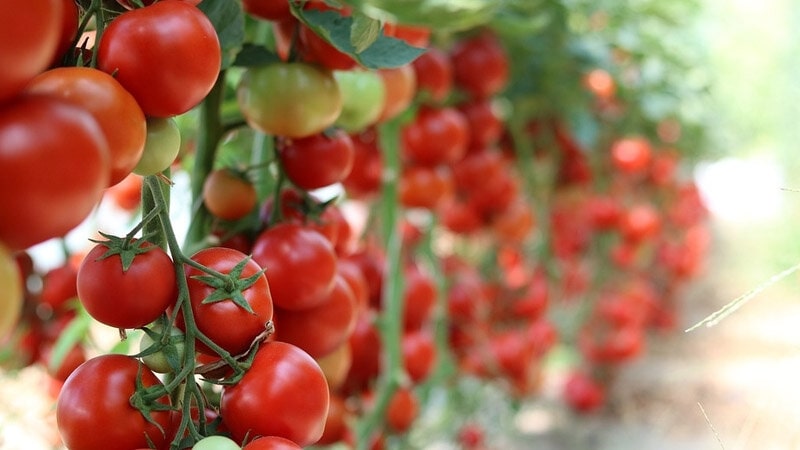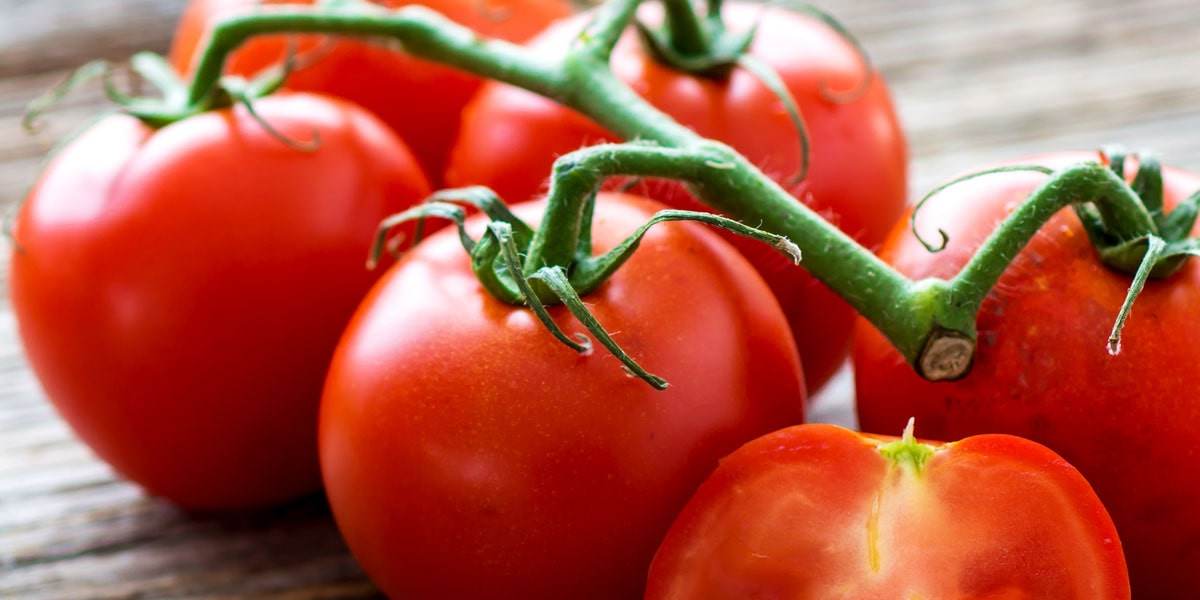The process of cultivating tomatoes from sowing to harvesting is a period between 60 to 100 days. Depending on the cultivation environment and the variety you want to grow it might be different. Generally, tomato plants fall into three categories. Indeterminate tomato plants, determinate, semi-determinate. Indeterminate tomato plants also known as vining produce fruit throughout the growing season unless they are damaged by frost or disease. Indeterminate types grow quite tall (though not all), some reaching as high as 8 or 10 feet, and need a lot of space and support. Tomatoes grown on indeterminate plants are called Chocolate Sprinkles, Mr. Stripey, and Bonnie Original. The other one is determined tomato plants also known as the bush, stops growing at some point and die off as the growing season ends. As a result, they're ideal for smaller locations such as side yards, balconies, and decks. Determinate tomato plants also produce the majority of their fruit in a shorter amount of time. The tomatoes grown on this plant are called Better Bush, Celebrity, and Roma which are better to be used in large quantities like canning and sauce. And the last type, as its name suggests, is a combination of both. Semi-determinate tomato plants reach as high as 6 feet. The products of this type cannot be classified. 
Tomato tree
If like most people you think that a tomato tree is a tree on which tomatoes grow, you might find it interesting that a tomato tree is neither tomato nor tree. The tomato tree, also known as Tamarillo, is an egg-sized fruit that comes in orange, yellow, purple, and red colors. The red color has a sour taste while other colors have a slightly sweet taste. These fruits may last up to ten weeks if they are kept in the refrigerator. Tree tomatoes can be added to stews, and soups or they can be eaten fresh and raw in salads and sandwiches. Tomato trees are more than just delicious fruits that would give you pleasure. They have a lot of health benefits and are rich in vitamin C and A, proteins, fiber, and antioxidants which can slow down the process of aging. Make sure you add it to your diet but watch out if you are a first-time consumer of tomato trees because they are extremely allergen. If it gave you scratchy skin or blister see a doctor as soon as possible. If not, then you can learn how to grow it at home in a pot and enjoy its taste and benefits.
Tomato growing
If you are wondering what the steps of tomato growing are, here is a guide from planting to harvesting. Mid-March to early April is the best time to start planting tomato seeds. Tomatoes are a warm-season crop that thrives in the sun and cannot withstand freezing. It's critical to avoid planting plants too early. If you're producing tomatoes from seed, sow the seeds indoors 6 weeks before your area's last spring frost date. Use a tiny tray to sow seeds 1/2 inch deep. Plant seedlings outside approximately 2 weeks after that date, or when day and night temperatures are in the mid-50s. It is also feasible to direct-seed tomatoes in the garden soil (1/2-inch deep) if you have a long enough growing season, but only if the soil temperature is at least 55°F. It's worth noting that 70°F soil is ideal for maximum germination in 5 days. 
Tomato types
Tomatoes are most commonly divided into numerous categories based on their form and size. Globe, Beefsteak, Cherry, Plum, and Ox-heart are the five basic types of tomatoes. There are over 1000 tomato varieties, each of which falls into one of these five groups. Tomatoes range in size from less than an inch wide to nearly four inches wide. Some are round, while others are flattened or rectangular. The form and size of grown tomatoes can be linked to their most prevalent culinary use. For example, when cooking tomato sauce, long, narrow tomatoes known as plum tomatoes are desirable. For slicing fresh onto a sandwich, large round tomatoes classed as globe tomatoes or beefsteak tomatoes are preferable. After being classified by form and size, tomatoes can be classified as heritage or hybrid, determinate or indeterminate, and skin color. Some of which are Beefsteak Tomatoes, Plum Tomatoes, Cherry Tomatoes, and Standard Globe Tomatoes.
Tomato varieties
All varieties of tomato are quite adaptable in many dishes. Adding these antioxidant powerhouses to your dinner, whether it's a hearty Beefsteak or a little yet sharp cherry tomato, may give a much-needed blast of flavor. And here are some of the most common tomato varieties in detail.
- Grape tomatoes are crispy and crunchy and come in a variety of colors. In terms of taste, grape tomatoes range from sweet to acidic. They keep their meaty texture when cooked due to their thicker skin.
- The salsa tomato is the king of tomatoes. Red Beefsteak tomatoes are huge, meaty, and juicy, making them excellent for use as a foundation for fresh sauces and dips. The mild flavor of red beefsteaks makes them the ideal supplement to any dish without giving it an extreme taste.
- A green tomato does not always imply that it is unripe. Green Beefsteaks have a distinct acidic and tangy flavor that complements other ingredients to produce something spectacular. These tomatoes may be used in juicing, sandwiches, salsas, dips, and cold or spicy sauces.
- Cherry tomatoes are one of the most versatile tomatoes available and are popular throughout the world. These tomatoes, which come in red, orange, yellow, and purple types, are a staple in the kitchen, giving a splash of color and flavor to any dish.
- Cocktail tomatoes have a sweet and fruity aftertaste to their conventional tomato flavor, making them a versatile tomato that works well with any meal or occasion.
Among hundreds of varieties of tomatoes, it is always up to individual tastes to pick up one that is most compatible with their needs. 
Tomato flower
Tomato plants produce yellow blossoms that must be fertilized before fruit can grow. When the tomato flowers are fertilized, they grow into tomatoes, which are identified by little green globes that appear at the base of the petals and gradually mature into full tomatoes. The average time it takes a tomato plant to develop fruit is entirely dependent on the variety. It might take as little as 20 days for certain types, but as much as 50 days for others. It will take roughly a month for your tomato plant to yield fruit on average.
Tomato garden
If you want to grow tomatoes in the garden remember that tomato plants yield the best product if they receive full light, at least eight hours of warm sunshine. Well-drained soil is also required. Tomatoes, unlike many other crops, generate roots along their stems and, if planted firmly, will establish a thick root system. When tomato seedlings are planted, it's better to bury the bottom two-thirds. Temperatures between 70 and 80 degrees Fahrenheit are ideal for seed germination. The plants thrive in temperatures between 65 and 75 degrees Fahrenheit, with six to eight hours of direct sunlight every day once planted in the garden. Regarding watering, garden tomatoes need 1-2 inches of water each week on average. Container-grown tomatoes require more water than garden tomatoes. The soil in containers warms up more quickly, resulting in higher water evaporation. Water containers until water flows freely from the bottom, which is a decent rule of thumb.
Tomato nightshade
Some vegetables such as tomatoes, eggplant, potatoes, and peppers are all members of the nightshade plant family. Tobacco is a nightshade plant as well. Because of the limited levels of alkaloids found in nightshades, they are distinctive. Alkaloids are plant-derived compounds. An alkaloid must include nitrogen and have an effect on the human body, generally medicinally. Plant-based medications that include alkaloids include morphine and quinine.  Tomatoes are sometimes mistaken for vegetables because of their savory flavor, although they are truly a fruit. Fruit is a seed-bearing edible component of a plant that grows from a bloom. Nightshade fresh fruits include things like peppers and eggplant. Any edible portion of a plant, such as the roots, stems, or leaves, is considered a vegetable. Potatoes are not a fruit, but rather a nightshade vegetable. Now you might wonder if nightshade vegetables are bad or good for your health. In general, there is no proof that nightshade foods are harmful to your health. These veggies may not be the greatest choice for persons with inflammatory and auto-immune disorders including arthritis or inflammatory bowel illness. Nightshades, on the other hand, do not produce inflammation directly. They may exacerbate pre-existing inflammation. However, experts advise that you cut them out of your diet for a few weeks. Then, when you're ready, reintroduce them and observe how you react. You may have a sensitivity to nightshades if you feel worse. Regardless of whether there is clear evidence linking nightshades to inflammation, you should never eat foods that make you feel uncomfortable or aggravate any existing illnesses.
Tomatoes are sometimes mistaken for vegetables because of their savory flavor, although they are truly a fruit. Fruit is a seed-bearing edible component of a plant that grows from a bloom. Nightshade fresh fruits include things like peppers and eggplant. Any edible portion of a plant, such as the roots, stems, or leaves, is considered a vegetable. Potatoes are not a fruit, but rather a nightshade vegetable. Now you might wonder if nightshade vegetables are bad or good for your health. In general, there is no proof that nightshade foods are harmful to your health. These veggies may not be the greatest choice for persons with inflammatory and auto-immune disorders including arthritis or inflammatory bowel illness. Nightshades, on the other hand, do not produce inflammation directly. They may exacerbate pre-existing inflammation. However, experts advise that you cut them out of your diet for a few weeks. Then, when you're ready, reintroduce them and observe how you react. You may have a sensitivity to nightshades if you feel worse. Regardless of whether there is clear evidence linking nightshades to inflammation, you should never eat foods that make you feel uncomfortable or aggravate any existing illnesses.

0
0